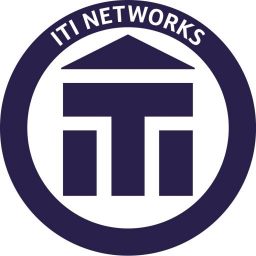Written by Rob Calkin
Many of us attended the FrenchNet translation process chat arranged by Holly-Anne Whyte and Alanah Reynor on 2 March. This is a broad but relevant topic, and we couldn’t possibly cover everything in one hour! We had three breakout sessions around 15 to 20 minutes each, taking three themes from the translator perspective:
- Your translation steps
- How you manage terminology (for example how you integrate the Termstorm suggestions)
- How your process has evolved over the years – and more!
Below are just some of the points discussed.
- Your translation steps
For dealing with challenging terms and expressions, some suggest, if you have exhausted all preferred avenues and further Web searching yields nothing, go out or have a coffee break. You then come back with a clearer view and hopefully the solution! Asking the FrenchNet group via the forum is another solution. Some talked of their possible over-reliance on FrenchNet and thus other ITI colleagues, but it was felt that such queries were perfectly fine – as professional translators we all seek to help each other wherever possible.
Our group thought about using translation software such as SDL Trados Studio, MemoQ, Wordfast or online resources during the translation process. We discussed Matecat which operates like translation software installed on your computer, however, it is online. Users can also access MyMemory, a public translation memory shared by all Matecat users.
Antidote – Bilingual, which is a bilingual French to English online dictionary with a multitude of features, including synonyms, antonyms, semantic fields and notable difficult terms, is a further valuable resource. It also offers Canadian and European French translations.
Furthermore, we discussed the volume of words we can translate per day. Many of us feel we can easily attain 1,500 – 2,000, whilst others realistically reach 2,000 – 2,500 and more. For most of us, producing 10,000+ words per day is definitely out! Albeit obvious, producing quality documents will be key to maintaining our reputation and that of the industry, and hopefully provide repeat work going forward. Your work volume must be manageable for you whatever your personal circumstances.
- How you manage terminology (for example how you integrate the Termstorm suggestions)
We acknowledged that, as the Termstorm sessions had proved, there may be numerous ways to translate particular terms in all fields.
This issue led us to ponder whether you might set up and develop a glossary for inclusion in future translations, either following Termstorm sessions, or completing particular translations. We discussed using Microsoft Word or Excel to do this. Although this is completely acceptable, there was concern that such programs might make any given term harder to find next time.
Some of us favouring translation software suggested you might use your term base or similar glossary facility. Certainly in software such as SDL Trados Studio, MemoQ and Wordfast, such a tool provides you with an index and search facilities to find terms you’ve created. During translation, where term bases are included within a project, terms should automatically appear for selection as you type.
The translation memory within such software is also considered an excellent terminology management tool. As this retains previously translated segments including terms, phrases or sentences, having the facility to be able to recall entire segments, or fragments thereof, makes the translation process more efficient.
- How your process has evolved over the years – and more
A number of experienced translators shared their experiences of early translation being solely reliant on traditional hard copy resources and tools, rather than those found online. There was even one mention of translating using a typewriter in the early days. It was interesting to observe, despite the rapid pace of technological evolution, the use of many such resources can still be applied and produce successful translations today. One said they rarely referred to hard copy dictionaries nowadays, although for many, to a greater or lesser degree, these remain a part of their translator’s staple diet!
We felt that online applications such as the dictionary Reverso and WebCorp Live are now coming to the fore, with scope for expanding their use. WebCorp provides a suite of tools offering access to the Web as a corpus (a vast collection of texts) through which individual terms may be translated. However, there remains a feeling that such tools whilst often accurate should still be used with care, and checked against other sources where appropriate.
We spoke of modern proofreading and checking projects when completed. We considered whether you read through and check the file when it is in the translation software or target format, for example Microsoft Word or PowerPoint. You might even use the Word reader (the Read Aloud facility) which reads text aloud, so you can see errors and required terminology changes. There was a general sense that any form of checking is acceptable, natural and necessary. Yet you can always read a file perhaps three or more times, and find small oversights you hadn’t previously seen. Fortunately for us, a translator’s work is never done!
In writing this, I appreciate that as translators we all have different views, experiences and personal translation preferences.
The entire session and breakouts provided another excellent opportunity to compare thoughts, ideas and experiences on the translation process, once again illustrating the diverse range of skills and knowledge available to us all at FrenchNet and ITI. A huge thank you to Holly and Alanah for your efforts in organising it. I look forward to many more similar sessions and indeed Termstorms.
